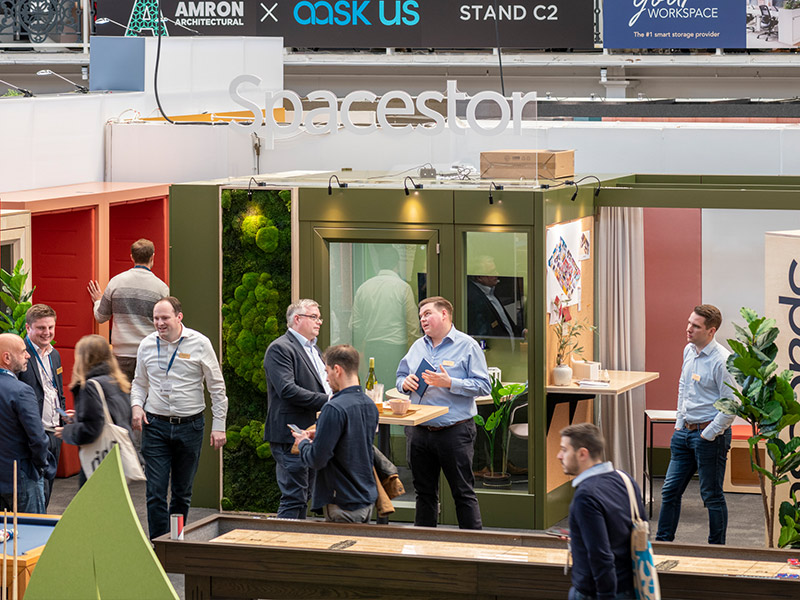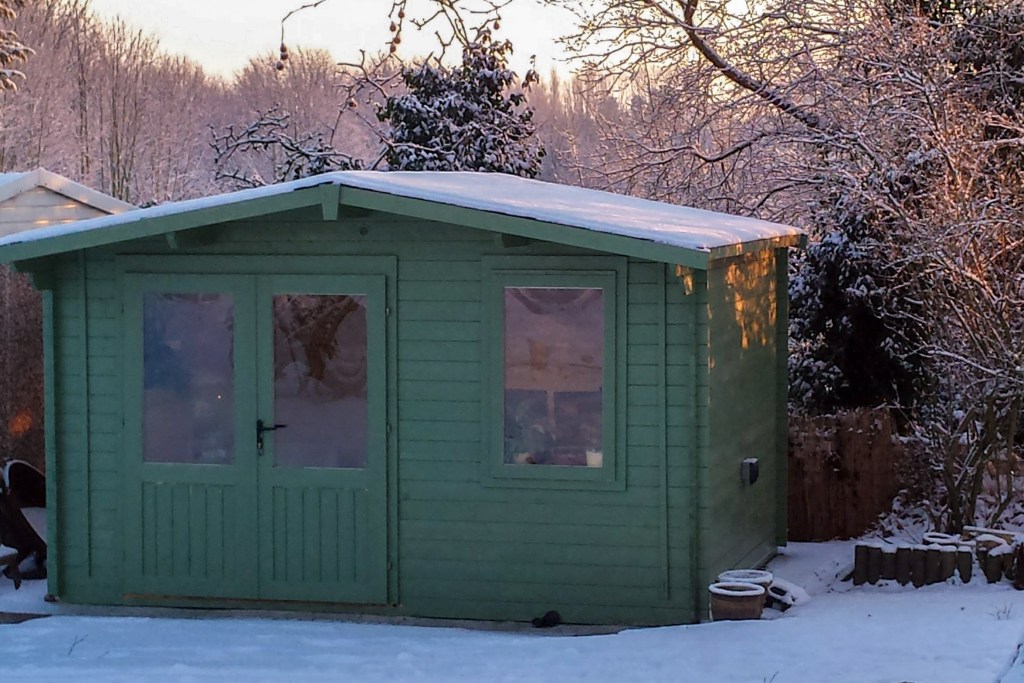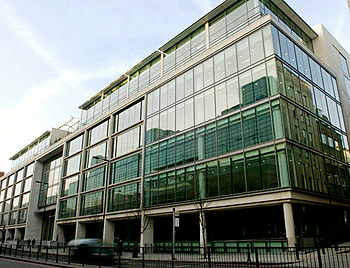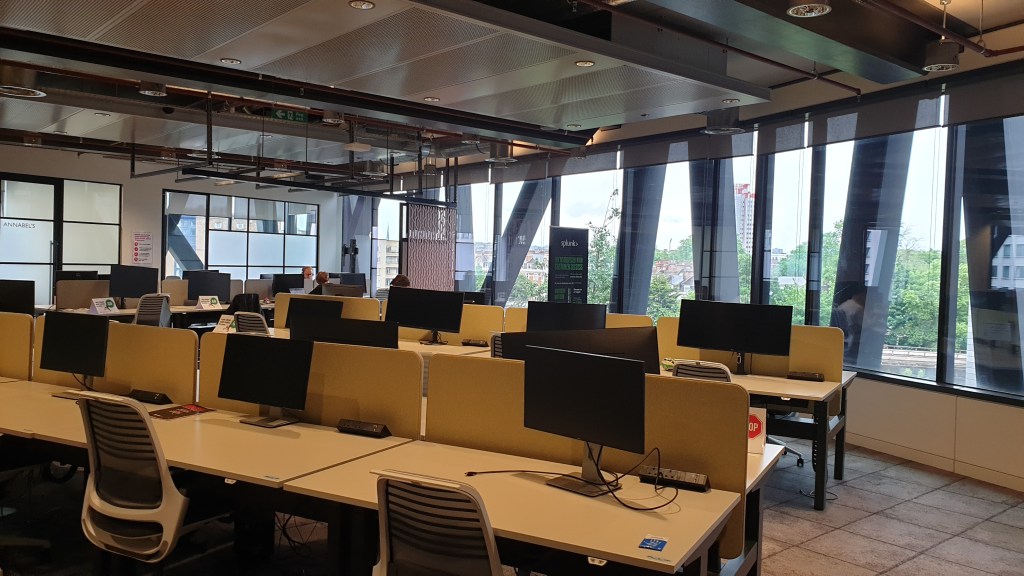Last week, I visited the Workspace Design Show in London. It was a fascinating experience and there were lots of new, spangly products to help organizations create better, more effective workspaces, as well as some excellent talks and discussions.

It got me thinking about what it is that makes for a good office experience, and the characteristics of the best office environment that I have worked in.
I have been home-based for the last 14 years, but my various home offices over the years have not been the best offices that I’ve worked in.

That office was in an ageing building belonging to the head office of a multinational FTSE 100 plc where I worked for a little over 10 years in the late 1990s and early 2000s.
So, what made it special?
It wasn’t the condition of the building, that is for sure. It was built in the late 1940s, with additions from later decades. The heating was ancient, the network was flaky, the windows were tatty (although they were openable) and every so often, a vein of asbestos would be found, necessitating disruptive and costly removal.
However, there were many things to like about it.
First, almost everyone, no matter how junior, had there own office, or shared with one other person. They were adequately furnished, but every office was different, and every one reflected the person that used it – we were able to personalise our workspace considerably – plants, pictures from home, etc. I was allowed to choose the colour on the wall when the office was redecorated (after the asbestos had been removed), and I even brought in a coffee machine and a radio!
Another reason for it being a good place to work was its layout. Everyone tended to leave their doors open, meaning anyone walking along the corridor could pop their heads in and have a chat – usually work related, but not always. The building was very long and narrow, with toilets at opposite ends, and the post room / copier room also at a far end. This meant that several times a day, dozens of colleagues would walk past the office or pass each other in the corridor. It was a very social space, and it was a creative and productive space as well.
There were other features that made it a good, productive and creative environment, not least the nature of the work that was carried out there. As well as offices, there were laboratories and workshops. It had a collegiate atmosphere with a lot in common with academic institutions, despite it being a very commercial operation. However, there were two features that really stood out.
First, due to the nature of much of the work that was going on, especially in the laboratories, breaks were at fixed times and everyone went to the canteen at the same time – a really good time to talk to colleagues in different departments, and a really good place to exchange ideas and solve problems. A lot of lateral thinking went on in those coffee breaks and many of those conversations turned out to be serendipitous.
Secondly, there was the fact that the buildings were set in landscaped grounds. The site was a country house set in several acres of gardens, so absolutely atypical of 99% of workplaces. But those grounds gave everyone that worked there access to space to decompress, relax and reset – or just enjoy the greenery.
Evolution
All that was achieved through a process of evolution and when I worked there, had developed over a period of roughly 50 years.
Of course, things change, and a new CEO decided that what the company really needed was a swanky open-plan floor in a posh, new office building in an expensive part Central London. The company crashed out of the FTSE 100 shortly afterwards, but I’m sure the two events weren’t entirely connected.

I recognise that my workplace was unusual, and had much more in common with an academic institution than the cut and thrust of a technology business or finance company. The building was owned by the company and its location was on the outskirts of a small town, not in a big city, but there are some lessons from that style of working that could be considered in modern metropolitan office buildings.
Having visited many office buildings in the last couple of years, most of which were barely a quarter-full, I have been struck by how organizations are desperately trying to create workplaces that will attract people to work in them – especially now that hybrid working patterns are taking hold and a lot of people would rather work from home.

The exhibitors at the show certainly had lots of ideas: zones for collaboration, pods for focused work and wellness rooms to recover from stress. Sofas and screens abounded, and of course, plants featured heavily (a good thing, of course). Every one of those solutions, however, lacked something really important – the ability for office workers to really realise something of their own identity. And as has been explained in older posts – identity realisation is the key to productivity. My friend Dr Craig Knight explains more here.
Whilst some degree of autonomy is available (the choice to work in a zone, pod or hot desk, for example), there is very limited ability to personalize individual workspaces. Despite huge budgets to create comfortable, ergonomic and efficient workspaces, and the provision of many amenities, such as high quality catering and recreation spaces, the new office building still remains far removed from the home environment where you can arrange your working environment to suit you.
Is it possible to recreate the style of office working that I experienced 25 years ago in a modern office building?
I don’t know. It would require people like HR managers and brand managers to relax a bit, and it might mean a different approach to space management, or even the architecture of office buildings.
Of course, my personal experience of what made for a good environment is just that – my own, personal experience. What worked for me might not work for anyone else at all, and the current design and management of workspaces might actually be the best possible way – feel free to comment.